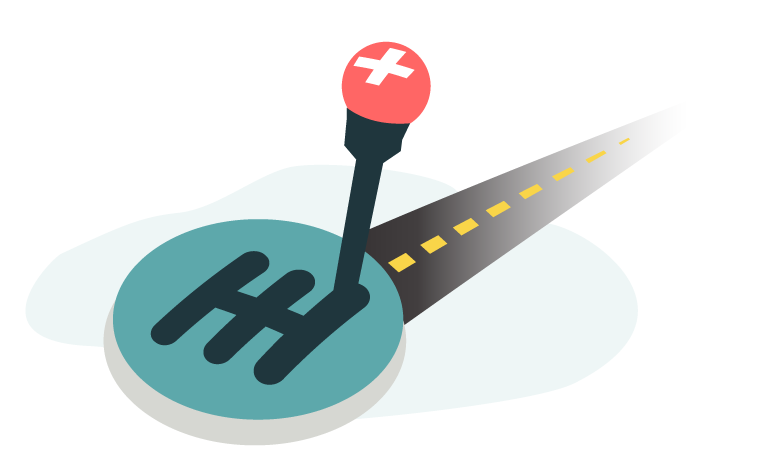No, this isn’t a story about why hospitals should remember to turn the lights off when patients are sleeping. Saving electric power is always a good idea, but for any company or organization that deals with people, the power of information transcends everything and requires different ways of thinking across the board.
The exponential evolution of technology means the innovation cycle not only never ends, it actually speeds up. What’s bleeding edge today will become obsolete in a matter of years — or less. Consumers are riding the IT innovation wave too, and they expect a high level of IT capability for most of their commercial experiences. Service and retail businesses have been dealing with this for decades. Now it’s time for the healthcare industry to catch up, or pay a steep price moving too slowly.
We have become a connected, information hungry society. We’re insatiable. We watch 24 hour news, keep tabs on our friends’ vacations, and get answers to arcane trivia questions and celebrity couple statuses from Google. Jump on any commuter train, or stop on any busy street corner, and you will see countless people glued to their devices watching, talking, and clicking away.
In healthcare, information related to a hospital visit is still generally hard to come by outside of talking to the people involved in providing the care. The Emergency Department (ED), in particular, has a reputation of long waits and lists of unanswered questions. To many, an unplanned visit to the ED falls in the same category as a trip to the DMV. In other words, not fun.
With nearly half of US medical care happening in emergency departments, hospitals face a daunting consumer experience challenge that is going to start costing them dearly as ED visits become tied to value based reimbursement schemes. The operational reality of running an ED, where it’s impossible to predict what a day will be like, combined with the fact that there is a waiting room full of unhappy, sick, injured, worried people screams for an information strategy that’s focused on providing information and answers. An approach that is compassionate. And one that’s designed to engage patients where they’re spending their time — on mobile phones.
A colleague recently told me a story about a patient who was visiting the emergency department at a major medical center. After finally being moved from waiting room to an exam room, the patient wound up waiting over 30 minutes for the doctor. At one point she stared at the closed exam room door and said, “On the other side of that door, everybody knows what’s going on. On this side, I have no clue and that is incredibly frustrating.”
“On the other side of that door, everybody knows what’s going on. On this side, I have no clue and that is incredibly frustrating.”
If the healthcare industry is serious about becoming more customer centric, the ED is a great place to make a big impact, and here are four reasons why a more robust engagement strategy is required for keeping patients informed.
-
Patients are predisposed to be detractors, not promoters.
“Customers” that are at the hospital are rarely glad to be there. Aside from the joy of delivering a baby, most hospital visits suck. This is especially true when visiting the ED where a situation required urgent care in the middle of the night. Unlike most other industry customer situations, a hospital experience starts at the very bottom and that makes positive reviews and high net promoter scores hard to achieve. -
Consumer expectations are higher than ever.
The consumer expectation bar for IT-based information capability is very high because they have seen what’s possible in various retail and service industry experiences. Retailers, hotels, insurance companies and even car dealers have gotten very good with the way they exchange information with customers. While it is easy to become incredibly informed before making a $10 purchase, busy nurses and doctors carry the communication load at the hospital which leaves most patients feeling woefully uninformed about a potential life threatening situation. -
Technology solutions must empower care teams.
The hospital staff is on the front lines, dealing with frustration and getting frustrated themselves. Nobody wins. When people visit the ED, they are worried, they don’t know when they will get seen, they have questions, and they’re not happy. The staff is stretched thin, dealing with the unpredictability that comes with any ED and the last thing they want is angry patients hounding them with questions they may not be able to answer. Technology will never replace the staff, but it should augment and add scale. -
Patient satisfaction is only going to get more important.
Patient reviews and Net Promoter Scores have become vital as the government drives the industry towards value based care reimbursements. If the department where half of a hospital’s care is being delivered is dealing with the scenarios above, constantly, that does not bode well for positive reviews, loyal patients, or high HCAHPS scores. A recent story describes how average the average hospital Yelp rating — 1.8 out of 5 stars — trails almost every other service industry. It is, quite literally, about as bad as it gets.
There is technology available today that is designed to improve the way hospitals keep patients informed. It is not an EHR website portal, nor is it a complex mobile app, both of which struggle to garner patient adoption. In order to drive patient engagement, technology must be simple, intuitive, and modern. It must interact with people in more human-like ways. And, most importantly, in hospital care setting, the technology must come off as warm, friendly, and compassionate. This is one reason why conversational text-based chatbots have such potential in healthcare.
Here’s a different story from an ED that shows the promise of advanced, conversational information solutions. An unexpected trauma situation delays a doctor for 20 minutes. A patient has been waiting in the exam room and the doctor’s dreading explaining the reason for the long wait to the frustrated patient and their family. When she goes in, she apologizes for the delay but before she could get another word out the patient said “That’s OK, your concierge bot kept me informed about the delay the whole time.”
Keeping patients in the dark is not intentional, but rather a byproduct of an IT system built around the billing needs of providers. Consumers are now armed with their connected devices, they’re fluent in digital conversations, and they go through their day with unlimited access to information. When they must go to the hospital for a very important, expensive, scary event, they expect a level of parity — an experience close to what they’re afforded in all their other interactions. The one thing that might help improve their frame of mind is some simple “over communication” with various details that fill in the gaps between nurse and doctor interactions. Information enables, it confers agency, it creates a sense of control — and, yes, it improves patient satisfaction.








